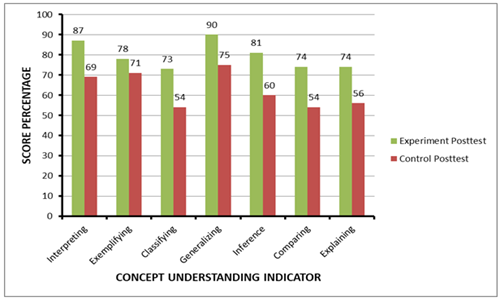
The Application of The Susan Loucks-Horsley Learning Model with a Contextual Approach to Static Fluid Material to Improve Concept Understanding Class XI High School Students
Abstract
Keywords
Full Text:
PDFReferences
Agustin, S. A., & Sesunan, F. (2019). Pengembangan Media Pembelajaran Interaktif dengan Pendekatan Sainstifik Menggunakan Adobe Flash. Jurnal Pendidikan Teknologi Informasi dan Vokasional, 1(1), 32–39.
Aini, Q., Lesmono, A. D., & Wahyuni, S. (2018). Hasil Belajar, Minat dan Kreativitas Siswa SMA pada Pembelajaran Fisika Menggunakan Model Project Based Learning dengan Memanfaatkan Bahan Bekas. Jurnal Pembelajaran Fisika, 7(1), 1. https://doi.org/10.19184/jpf.v7i1.7218
Arista, H., & Rahma, A. (2021). Penerapan Model Pembelajaran Ropes Meningkatkan Aktivitas dan Ketuntasan Hasil Belajar Fisika Siswa Kelas X TKJ-A di SMK Minhajut Thullab Muncar. Jurnal Ilmiah Ilmu Pendidikan, 8(1), 96–106.
Dewi, N.G., Irianti, M., Riau, U., Widya, K. K., Baru, S., Tampan, K., & Pekanbaru, K. (2023). Penggunaan Media Pembelajaran Fisika Vascak Physics Animation untuk Meningkatkan Pemahaman Konsep Siswa pada Materi Alat Optik Kelas XI SMA Negeri 3 Bangko Pusako. Journal on Education, 05(02), 4774–4782.
Emiliani, Z, F., & Februartati. (2018). the Application of Learning with Cognitive Conflict Approach in Improving Understanding Concept of Physics of Class VIII Students of SMP 40 Pekanbaru Penerapan Pembelajaran dengan Pendekatan Konflik Kognitif dalam Meningkatkan Pemahaman Konsep Fisika Siswa. Jurnal Geliga Sains, 6(1), 31–38.
Husain, M. S., Kendek, Y., & Fihrin, F. (2018). Analisis Tingkat Pemahaman Konsep Fluida Statis dan Penerapannya di Lingkungan Sekitar pada Siswa SMA Negeri 2 Palu. JPFT (Jurnal Pendidikan Fisika Tadulako Online), 6(1), 21. https://doi.org/10.22487/j25805924.2018.v6.i1.10015
Jumadi, P., Atiarani, V., & Dwi, R. (2014). Developing Integrated Science Education Learning Kits of The Susan Loucks-Horsley Model. Jurnal Kependidikan, 44(1), 15–25.
Nawati, I., Saepuzaman, D., & Suhandi, A. (2017). Konsistensi Konsepsi Siswa Melalui Penerapan Model Interactive Lecture Demonstration Pada Materi Gelombang Mekanik. Jurnal Penelitian Pembelajaran Fisika, 8(1), 32–38. https://doi.org/10.26877/jp2f.v8i1.1334
Nurhayati, N., Munawaroh, F., Wulandari, A. Y. R., & Ahied, M. (2019). Pengaruh Model Pembelajaran Susan Loucks Horsley untuk Meningkatkan Kemampuan Berpikir Kritis Siswa. Natural Science Education Research, 1(2), 99–107. https://doi.org/10.21107/nser.v1i2.4217
Prihatingsih, Zubaidah, S., & Kusairi, S. (2016). Prihartiningsih-1053-1062.pdf (pp. 1053–1062).
Puspita, S. W., Eko, S., & Wayan, S. (2017). Analisis Pemahaman Konsep Vektor Pada Siswa Sekolah Menengah Atas. Jurnal Ilmiah Pendidikan Fisika Al-BiRuNi, 6(2), 159–168.
Riwanto, D., Azis, A., & Arafah, K. (2019). Analisis Pemahaman Konsep Peserta Didik dalam Menyelesaikan Soal-Soal Fisika Kelas X Mia SMA Negeri 3 Soppeng. Jurnal Sains Dan Pendidikan Fisika, 15(2), 23–31. https://doi.org/10.35580/jspf.v15i2.11033
Rohman, A., Ishafit, & Husna, H. (2021). Effect of Project Based Learning Model integration with STEAM on Creative Thinking Based on the Understanding of the Physics Concepts of High School Students on Rotation Dynamics. Jurnal Pendidikan Fisika Tadulako Online, 9(1), 15–21. http://jurnal.fkip.untad.ac.id/index.php/jpft
Sasmita, D., Utami, C., & Prihatiningtyas, N. C. (2019). Pemahaman Konsep Matematis Siswa dengan Model Pembelajaran Generatif Berbantuan Alat Peraga Puzzle Pythagoras. Variabel, 2(2), 62. https://doi.org/10.26737/var.v2i2.1816
Sasmita, P. R., & Hartoyo, Z. (2020). Pengaruh Pendekatan Pembelajaran STEM Project Based Learning terhadap Pemahaman Konsep Fisika Siswa. Silampari Jurnal Pendidikan Ilmu Fisika, 2(2), 136–148. https://doi.org/10.31540/sjpif.v2i2.1081
Shidik, M. A. (2020). Hubungan Antara Motivasi Belajar dengan Pemahaman Konsep Fisika Peserta Didik Man Baraka. Jurnal Kumparan Fisika, 3(2), 91–98. https://doi.org/10.33369/jkf.3.2.91-98
Trianggono, M. M. (2017). Analisis Kausalitas Pemahaman Konsep dengan Kemampuan Berpikir Kreatif Siswa pada Pemecahan Masalah Fisika. Jurnal Pendidikan Fisika dan Keilmuan (JPFK), 3(1), 1. https://doi.org/10.25273/jpfk.v3i1.874
DOI: http://dx.doi.org/10.31258/jes.8.2.p.247-258
Refbacks
- There are currently no refbacks.
Copyright (c) 2024 Ramadhani Ramadhani

This work is licensed under a Creative Commons Attribution 4.0 International License.
Publisher: FKIP Universitas Riau












